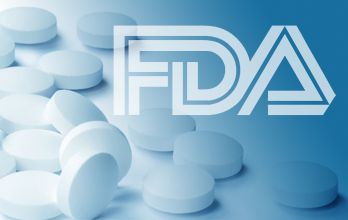FDA Plans Workshops to Discuss Opioid Regulation
This comes a week after its first request for a drug removal.

A week after making its first-ever request for removal of a consumer-abused painkiller, the US Food and Drug Administration has shared plans to combat the national opioid epidemic with revamped abuse-deterrent properties.
Recently appointed FDA commissioner Scott Gottlieb announced this week the administration will hold public meetings to discuss whether it has the right information to determine if current abuse-deterrent products are having their intended impact on opioid abuse limitation.
“The FDA is committed to looking at all facets of this complex issue and collaborating on various approaches, as there are no simple answers to reverse this epidemic,” Gottlieb said. “In my prior communication, I noted that one of these approaches would be asking the public, through various forums, to share additional steps and information that the FDA should consider in addressing these challenges.”
The public workshops, scheduled for July 10-11, are titled, “Data and Methods for Evaluating the Impact of Opioid Formulations with Properties Designed to Deter Abuse in the Postmarket Setting: A Scientific Discussion of Present and Future Capabilities.”
This action proceeds FDA’s decision on June 8 to request Endo Pharmaceuticals remove its oxymorphone hydrochloride (Opana ER) treatment from the market due to its public health consequence of abuse. Independent experts at the FDA advisory committee meeting in March had voted 18-8 that the benefits of reformulated oxymorphone hydrochloride no longer outweighed its risks.
The workshops, to be held in Silver Spring, MD, will feature expert panel members and interested stakeholders, discussing the ways to improve and better interpret data regarding the opioid epidemic. The FDA currently has policies set to implement a steering committee, Gottlieb said, which will place “particular emphasis on evaluating efforts we can take to reduce the number of new case of addiction.”
The administration also currently regulates opioid formulations to deter abuse, depending on the drug. Some of these formulations make it challenging to crush or manipulate tablets to dissolve into liquid for injection, or combine the active opioid analgesic ingredient with naloxone to block the high of an injection or snort.
FDA will continue to support these innovations, Gottlieb said.
“However, we recognize that there is a gap in our understanding of whether these products result in a real-world, meaningful decrease in the frequency and patterns of opioid misuse and abuse,” Gottlieb said.
A press release regarding the workshops was made available.
Information regarding the public workshops was also made available on the FDA website.
Related Coverage
FDA Requests First-Ever Removal of Painkiller from Market